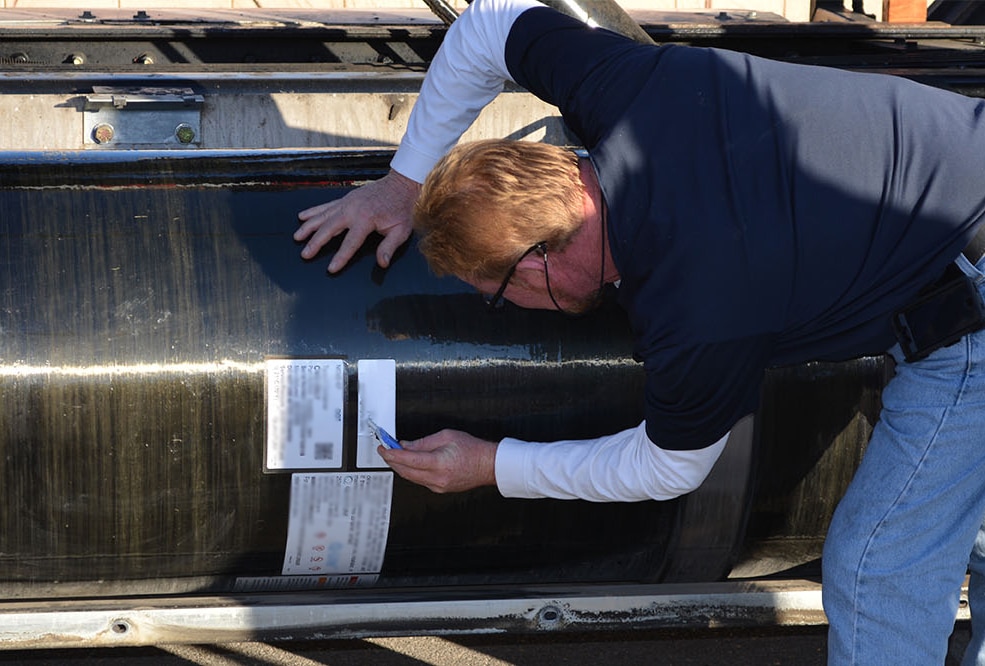Vehicles that run on compressed natural gas (CNG) are gaining popularity within the alternative fuels industry, thanks in no small part to Cummins latest X15N engine, the adoption of CNG vehicles by major logistics carriers, the availability of renewable natural gas (RNG), and the proliferation of natural gas fueling stations. But as these fleets grow, it’s important to know what to do when it’s finally time to retire individual vehicles. Here are some key points to keep in mind for how to defuel and decommission a natural gas vehicle (NGV).
Have a Written Procedure
Trucking, refuse, buses — there are different configurations for the fuel systems, fuel storage cylinders and their locations, system maintenance, and decommission procedures based on the types of vehicles that you use. That’s why it’s critical that a natural gas fleet has a detailed, written procedure for how its technicians will properly defuel and decommission each of them.
Resell or Dismantle
Your written procedure and practices document will need to note how you wish to handle the natural gas fueling system prior to the sale or disposal of the vehicle. Either you can leave the vehicle operational at the time that you sell or auction it, or you can choose to remove its natural gas components if you’re concerned about potential risks with the next owner. It’s worth noting that when any natural gas vehicle is involved in an incident, everyone that has ever been associated with that vehicle can be held liable — even if they’ve done nothing wrong.
Proper Training and Equipment
While having thorough documentation is important, you also need to ensure that your technicians are fully trained on all of the components involved with natural gas fuel systems and engines. They’ll need the appropriate equipment to perform any defueling, like a vent-back-to station system that is attached to (or part of) either a natural gas station or a code-compliant vent stack. A vent stack can either be freestanding or attached to a building, and comes with its own list of requirements.
Depressurization and Cylinder Valves
Before defueling a natural gas vehicle, their cylinders have to be completely defueled. This process is different depending on whether these cylinders have manual valves, electro-mechanical valves, or electric valves.
Where To Defuel
Defueling an NGV should always be performed outdoors, and must include earth grounding to be safe and code compliant. Special types of fire extinguishers must be available to anyone performing this service, and users must be properly trained to ensure safety for all involved.
Additional Safety Points
Although these points may seem obvious, they’re especially important to mention:
- Never leave a vehicle unattended when depressurizing or defueling.
- Wear eye protection and the appropriate PPE (personal protective equipment).
- Verify that all of the vehicle’s cylinders are depressurized. Technicians being struck and killed by valves on cylinders that weren’t.
Defueling Multiple Cylinders
The following process should be used when you have a vehicle with multiple cylinders to defuel.
A technician should open one cylinder valve only and allow the fuel to flow to the defuel vent equipment. If present, a high-pressure gauge installed on the fuel system should show the actual cylinder pressure. (Note: these gauges are not required by code. If the gauge does not show pressure, the valve has failed in the closed position.) The technician should also notice an audible sound as fuel is flowing, which will dissipate as pressure is reduced.
Once defueling is complete, the technician should open the next cylinder valve in conjunction with the first. They should also notice that the high-pressure gauge will show the actual pressure in both cylinders. If fuel flow gets louder, they will know that fuel is moving through the second valve correctly.
Audible fuel flow may be affected by pressure relief devices (PRDs). Cylinders with a PRD manifold connecting two or more cylinders with a shared PRD will only produce a slight change in flow noise. This is caused by fuel moving through the open channel of the interconnected cylinders.
As fuel passes through the cylinder valves and fuel lines, both should become cool or cold to the touch depending on fuel volume.
Follow this procedure for all other fuel cylinders installed on the vehicle, validating the constant flow of fuel until there is no pressure in any of them. Then the high-pressure connection can be broken.
Defueling Ports
We mentioned earlier that not all CNG vehicles are designed the same way. This includes whether they do or don’t have defueling ports. Those that don’t require a special defueling procedure.
Fuel Transfer ≠ Defueling
Vehicle-to-vehicle transfer of fuel does not mean that you have defueled a natural gas vehicle, although it does mean that the pressure has been reduced. Complete defueling can only be accomplished using the defuel procedure.
Purging Defueled Natural Gas Cylinders
After defueling and before disposing of CNG cylinders, you must use water or an inert gas (for example, nitrogen) to purge them. It should come as no surprise that there’s a specific procedure for that, too.
Do Your Technicians Need Vehicle Training?
We can teach your technicians all that they need to know when it comes to natural gas vehicle safety, CNG fuel system inspections, and the defueling, decommissioning, and disposal of NGVs. This will lead to substantial reductions in parts and repair, less fleet downtime, and long-lasting vehicles. Then, when it’s time to retire vehicles from your fleet, your technicians will understand the appropriate procedures that need to be applied. Whether you have an established fleet or you’re just now considering the adoption of natural gas vehicles, make sure that your team has the training they need to do the job right. Contact us today to get started.

